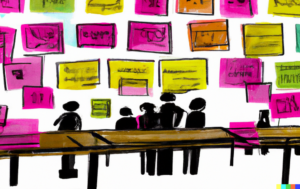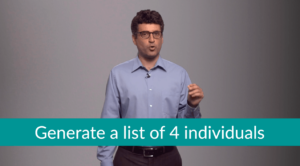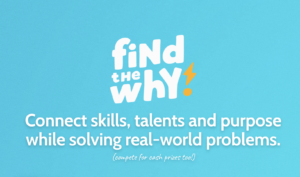Interview: John Danner, CEO, Rocketship Education

What are the ingredients of a successful charter school organization that creates great results for children?
A strong school culture that makes success a non-negotiable and parent involvement that creates the motivation to make it happen.
Teaching and leadership talent capable of delivering on the mission of success.
What will it take to build a nationally scalable model for charter schools?
Schools are 0% margin businesses. It’s pretty hard to do good R&D and fund expansion of a 0% margin business. We think there will be half a dozen charter networks capable of creating 1000 schools or more. To get to this kind of scale, you have to do something differently than the typical 0% margin school.
At Rocketship, we reinvented the elementary school and created what we call a hybrid school, with 25% of the school day online in our Learning Lab and 75% in a traditional classroom. Since Learning Lab does not require certificated teachers, we save 25% of our salary costs, which amount to $500K per year. This is just like getting a check each year for $500K to reinvest in the quality of your school. We use it to give our Principals a year of training, have an Academic Dean at each campus, pay our teachers 20% above districts, and run a 2 hour Response to Intervention (RTI) program for our bottom 20% of students. That’s allowed us to create schools that outperform surrounding high-income districts. Our first school is currently #3 in California out of more than 2000 low-income elementary schools. We have two schools now, open a third in the Fall, and feel pretty comfortable that the model replicates well. The other nice property is that the higher margins allow us to open new schools including building our own school buildings without raising additional philanthropy.
At Rocketship, we currently have 16 teachers instead of 21. Our vision is that online learning should be responsible for the majority of basic skills learning at Rocketship (80%), freeing our teachers to use classroom time to teach students how to think. We believe that we will see an equal split in time between basic skills online and thinking skills in a classroom. This 50/50 online/classroom hybrid model has a lot of properties that helps us scale. First, we will have 10 teachers at each campus instead of 20. With 10 teachers on each campus, we have much less need for talent. With the extra money we save ($1M), we can double teacher pay to well over $100,000 per year. With Learning Lab and RTI delivering 80% of basic skills, teachers can spend their class time to teach values and higher order thinking skills. We think that both financially and from a talent perspective, the model gets more and more compelling as we drive online learning forward.
You plan on opening several schools each year. You recently were given a monetary boost from Reed Hastings, CEO of Netflix. Can you talk about how that boost changes anything in your plan?
Reed made a grant a few years ago to Rocketship and was the first to see the power of the model. What he has done recently is to purchase Dreambox, an elementary math online curriculum creator, which will allow us to really improve math learning gains for our students over the next couple of years.
[Editor’s Note: If you want to watch a two minute video on Dreambox, as told by Sarah Daniels, VP of Marketing, edReformer taped her last week: Sarah Daniels explaining what Dreambox does for students]
Charter School Growth Fund and many others are major supporters and since we don’t need to raise money to open new schools, this support goes to building our capacity to tighten up the school model and accelerate growth. We’re investing most heavily in online learning, our hybrid school platform (technology that will make it easy for others to create hybrid schools), leadership development, and empowering and educating parents to transform public school boards.
Many have pointed out that charter schools “skim from the top,” and they use that as a kind of defense against charter schools. True?
We’re going to educate all of the students, so there’s nothing left to skim.
Many people talk about charter schools that don’t do well. But you have figured out a model that works. From a human capital perspective, what do you do with your staff and other executives to ensure you have an effectively run organization?
Charter schools are hard to do well, just like other businesses. We invest significantly in developing our teachers, Principals, Deans and other staff. We don’t believe that this is terribly transferable, which is why we think a few organizations will get very good at this and ultimately run many schools.
How would you describe the intersection of personalized learning and equity?
Individualizing learning maximizes the learning gains for each child when done well. It gives your top performing and lowest performing students the same attention that the middle 50% get during class time. While working harder and longer can be a way to create greater equity, we think that individualizing learning, focusing effort on the exact things a student needs right at that time, is far more effective. Our RTI program for example, moved 90% of its students from the bottom two quintiles of achievement in California to the top 3 quintiles in one year of intervention. This kind of focused work means that those students can now take full advantage of the classroom.
What kind of courseware and instructional curriculum do you use to bring students to a point of achievement?
We’re pretty agnostic on online curricula, although clearly excited about companies like Dreambox, Reasoning Mind, Mind Research Institute. Next year, with SRI’s help we’re going to instrument Rocketship to be a test lab where we can measure the effectiveness of every online curricula for elementary schools. Then we’ll use what creates the most student gains. We’re also very excited about starting to look at learning differences among our kids and seeing if specific curricula do better with certain learners. Ultimately, we believe there will be a platform like the AppStore where thousands of educators will create online lessons and videos tied to learning objectives and schools will be able to use the best ones and get a single report on the outcomes.
Have you seen successful interaction between educators, software developers. What does it look like?
Yes, Dreambox does this well. They have three teachers on their team who develop the lessons and a team of engineers who have created the authoring system for them and provide them the digital manipulatives they need.
What do you think the future looks like when we have given these kids who are getting lost in the system a great education?
If we eliminate the achievement gap, not only will we give every kid in the U.S. a fair shake at success, but we’ll be able to move the U.S. from the middle of the pack on education to one of the best in the world.
How do you maintain consistent quality education in America, let alone in a public school? What do we need right now?
We need to support our President and Congress as they push to make schools accountable and scale up ideas that work. We need to wake up every morning ready to fight to close the achievement gap whatever it takes.
View Larger Map







0 Comments
Leave a Comment
Your email address will not be published. All fields are required.